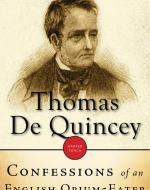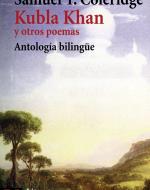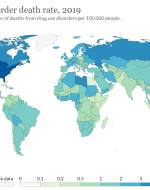The project can be regarded as an exemplary digital source showing that drug use is still prevalent, and its representations are commonly seen in several literary sources from 18th, 19th, and 20th centuries.
From scientific perspective, it can be said that drug use related to addiction and substance abuse are important health problems that have negative outcomes. Accordingly, it can be claimed that this action has become an important part of the lives of those who are addicts or constantly using.
The experiences of the users are various; and drug use and these experiences manifest themselves in different parts of their lives from social life to work life. In relation to these, it can be stated that these experiences show themselves in different ways, as well, including literature and art works.
Overview
In this project, topics of drug use and the representations of drug use in the literature in the last three centuries were held. It is thought that drug use is still prevalent and during the last three centuries, it has been performed and its impact was seen in the literary works.
The goal is to create a digital source and get the users who are interested in drug use and its literary representations in the last three centuries familiarized with these topics.
The literary works used are:
- The poem “Kubla Khan” written by Coleridge in 18th century,
- The book “Confessions of an Opium-Eater” written by De Quincey in 19th century,
- The book “Junky” written by Burroughs in 20th century,
- The book “Trainspotting” written by Welsh in 20th
Regarding the methodology, the main structure is showed below:
- The statistics about drug use in the US and UK were presented in the project declared recently.
- A map showing where the books are published or written was presented.
- A timeline along with summaries of the literary works was presented.
- A set of visualizations showing the frequency of the words used in the literary books was presented through word clouds and related visualizations including pies, bar graphs.
- A set of visualizations showing that the frequency of the words related to drug use and addiction like laudanum, hashish, opium and so on was presented.
- At the end, the conclusion about the findings was presented.
In conclusion, it was found that drug use is still a prevalent action, and its representations can be seen in the literary works written and published in of the US and UK during 18th, 19th, and 20th centuries. Moreover, depending on the literary work, different features are presented in conclusion part.
Introduction:
https://editions.covecollective.org/blog/introduction-drug-use-and-its-representations-literature
Goals and Significance:
https://editions.covecollective.org/blog/goals-and-significance-project
Drug Statistics:
https://editions.covecollective.org/blog/key-insights-and-statistics-il…
Map: https://editions.covecollective.org/content/drug-use-and-its-representations-literature
Timeline: https://editions.covecollective.org/content/timeline-books-about-drug-use-representations-literature
Books:
https://editions.covecollective.org/blog/kubla-khan-coleridge
https://editions.covecollective.org/blog/confessions-opium-eater-de-quincey
https://editions.covecollective.org/blog/trainspotting-welsh
https://editions.covecollective.org/blog/junky-burroughs-20th-century
Conclusion:
https://editions.covecollective.org/blog/conclusion-drug-use-and-its-representations-literature
Additional Sources and References
https://editions.covecollective.org/blog/additional-resources-and-references








